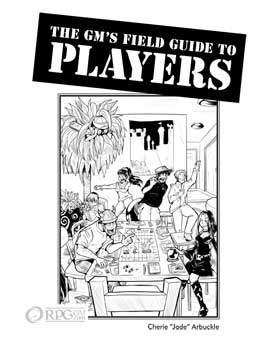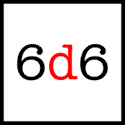I myself have 12 hats, and each one represents a different personality. Why just be yourself?
–Margaret Atwood
I love props. I’m constantly making props for my games, from fake newspaper articles to treasure maps. Sure, you can tell your players what their characters fine, but then they’re seeing the prop through your eyes. You can’t help but put a spin on their findings as you describe them. Having an actual prop the players can handle allows them to form their own opinions without any “coloration” by the GM.
(Photo courtesy of http://www.flickr.com/photos/dspender/ / CC BY 2.0)
Why use props?
Props can also help you get into character. This is what I love most about them. Each of my characters has (PCs and important NPCs) has something that identifies them. Not only does this prop help distinguish one character from another, the type of prop chosen says something about the character who uses it.
The main props I use with my PCs are costumes. Every one of the characters I play has a “costume” that comes straight out of my wardrobe. Now, that doesn’t mean I come to the gaming table looking like a refugee from the local Renaissance Faire (though that can certainly be a lot of fun once in a while). Instead, I find something in my wardrobe that reminds me of my character.
For Galen, my 14th level human bard/sorcerer, it’s a purple tank top with a green shirt over it, his patron’s colors. On the other hand, Feynan, my half-elven rogue/sorcerer with a penchant for lightening, requires an orange tank-top. Rafe, a classic WoD mage, wears a black leather motorcycle jacket, while Naiya, a Tremere vampire always sports an antique rhinestone necklace. The one thing all these costumes have in common is that none of them cause anyone to look oddly at me when I stop at the grocery store for some snacks. Having a prop (or clothing article) helps me get into character before the game even starts.
Props as a GM tool
I find props immensely valuable as a GM tool, as well. Now, I don’t worry about a prop for every Tom, Dick an Haley in my game; only the major NPCs get props. But having a prop for each character allows for two things: 1) my players know immediately who they’re talking to and 2) it helps me keep my NPCs straight and helps keep me from getting sidetracked. Having something in my hand or on me reminds me to stay focused on that one character.
Types of good props
Hats make great props for NPCs because they’re generally quick and easy to put on and take off. Small trinkets, particularly if they inspire a physical mannerism, also work really well. Perhaps your NPC likes to stack coins, play with Chinese harmony balls, or roll dice. Maybe he always has a toothpick in his mouth. Or maybe she carries a walking stick or cane and uses it to punctuate her speech. Or perhaps he doodles while he talks or creates origami animals.
Using props
The main point when using props is to avoid overusing them or making them so obvious they upstage the what you’re saying. Usually, a prop in use should be subtle, something the character does absent-mindedly. You want to use the prop in such a way that it helps the players remember who they’re talking to, but without causing the prop to take center stage.
Notice, though, that I said usually. Sometimes a prop is absolutely crucial to the story. If your players know that any prop you pick up when you’re speaking in character actually exists in the game, you can have an NPC play with it to bring it to the PCs attention. Or you can place it on the table in front of you and wait until someone asks about it.
Any of the techniques above can help your players (and you) feel more immersed in the game. Props are great tools for both players and GM. You can start small — pick one prop for you PC or for a major NPC. Think of a way that character would use that prop. You know you’ve really got it down when your players can tell who they’re speaking to without you having to say a single name.
Related posts
Articles Zemata thinks are related
- The Characterisation Puzzle: The Inversion Principle (campaignmastery.com)
- Revealing the Exotic (campaignmastery.com)
- The Characterisation Puzzle: When personalities are hard to find (campaignmastery.com)
- Game Mechanics for Personality (for any edition of D&D) (mediocretales.com)
- Laughing? Well I’m very happy at least from abstract xp (abstractxp.wordpress.com)
- The Characterisation Puzzle: The First Decision (campaignmastery.com)

![Reblog this post [with Zemanta]](http://img.zemanta.com/reblog_c.png?x-id=16c95a62-9a4c-4e6b-8f7d-406d93287d7a)




